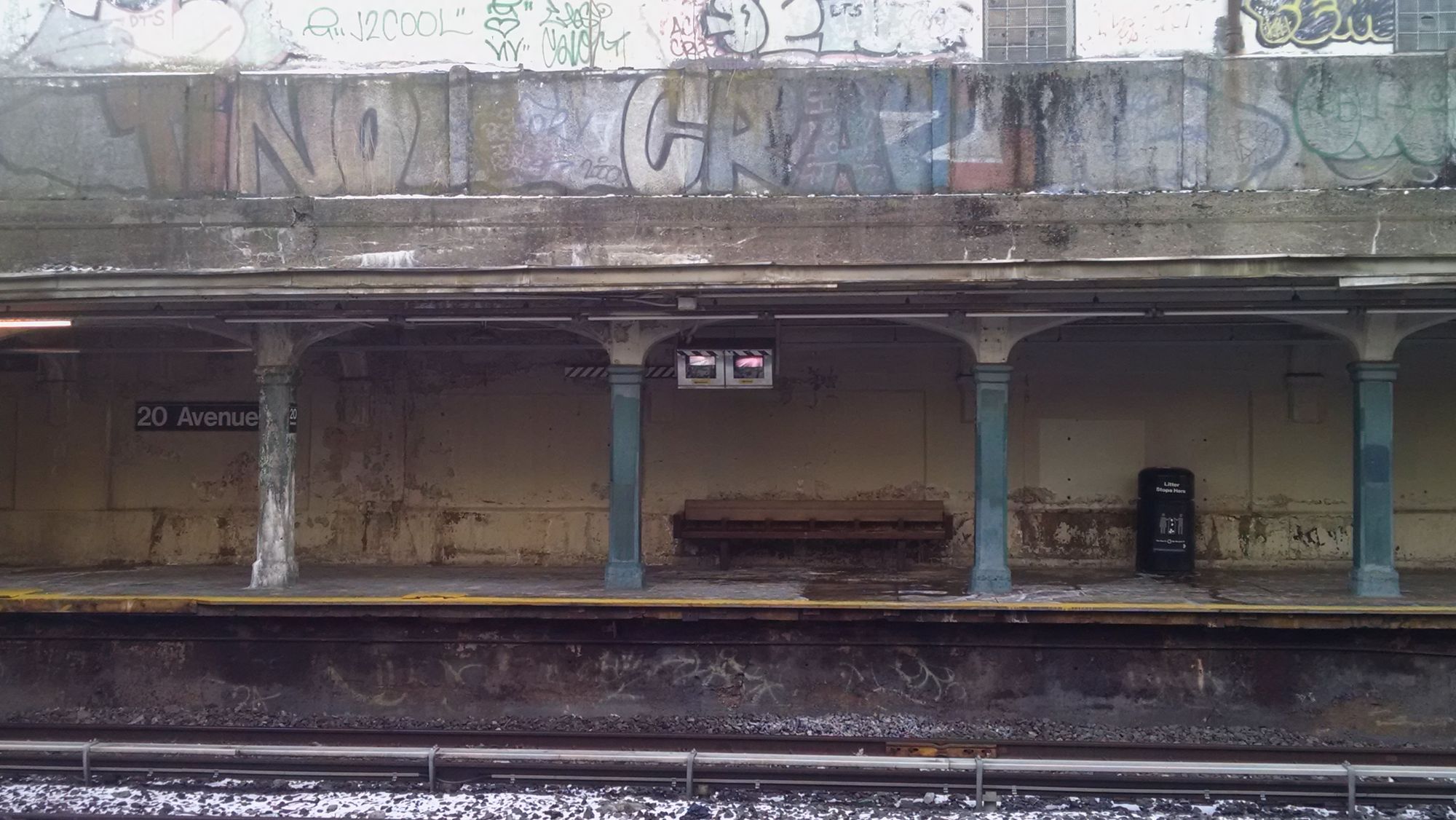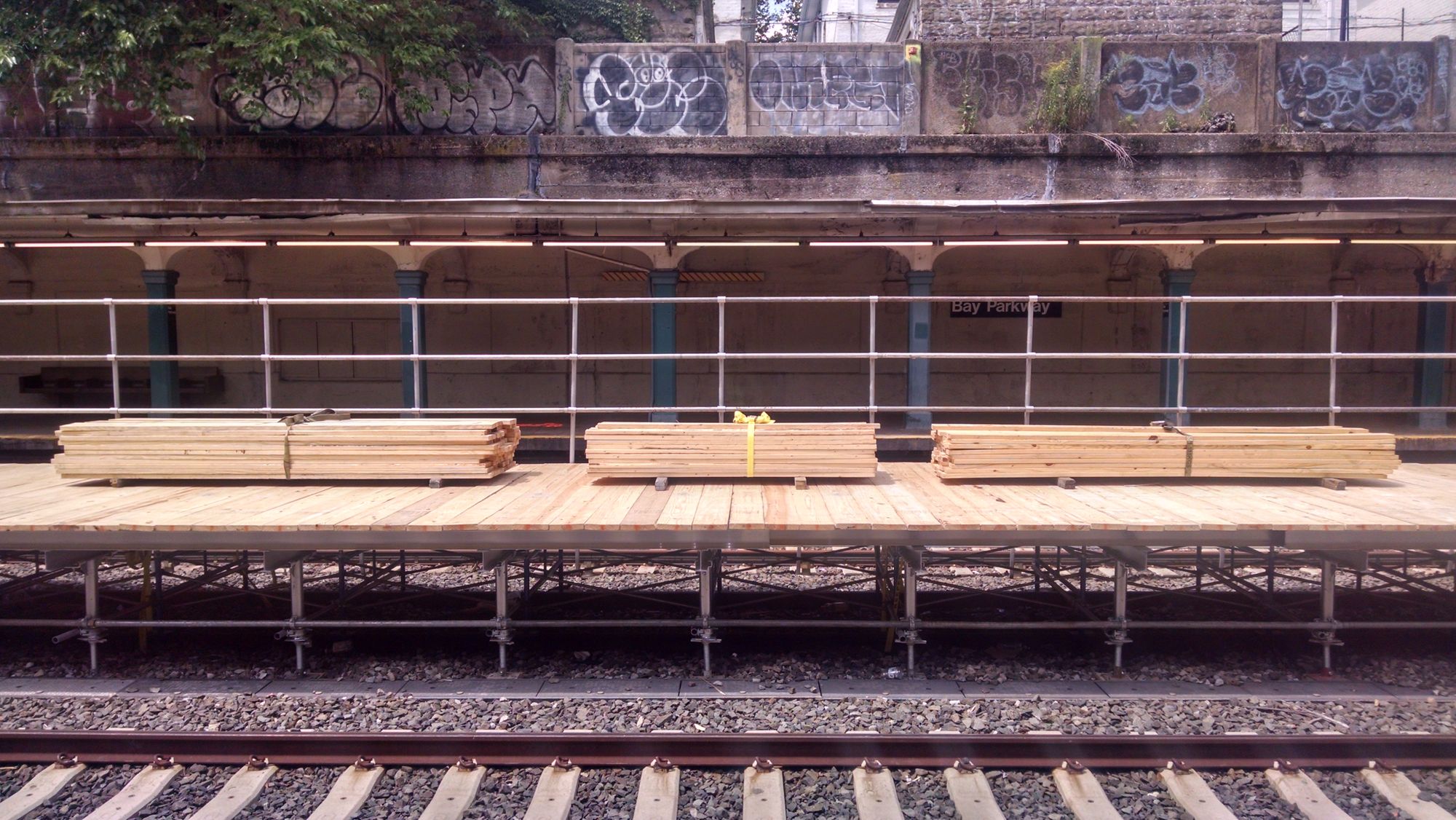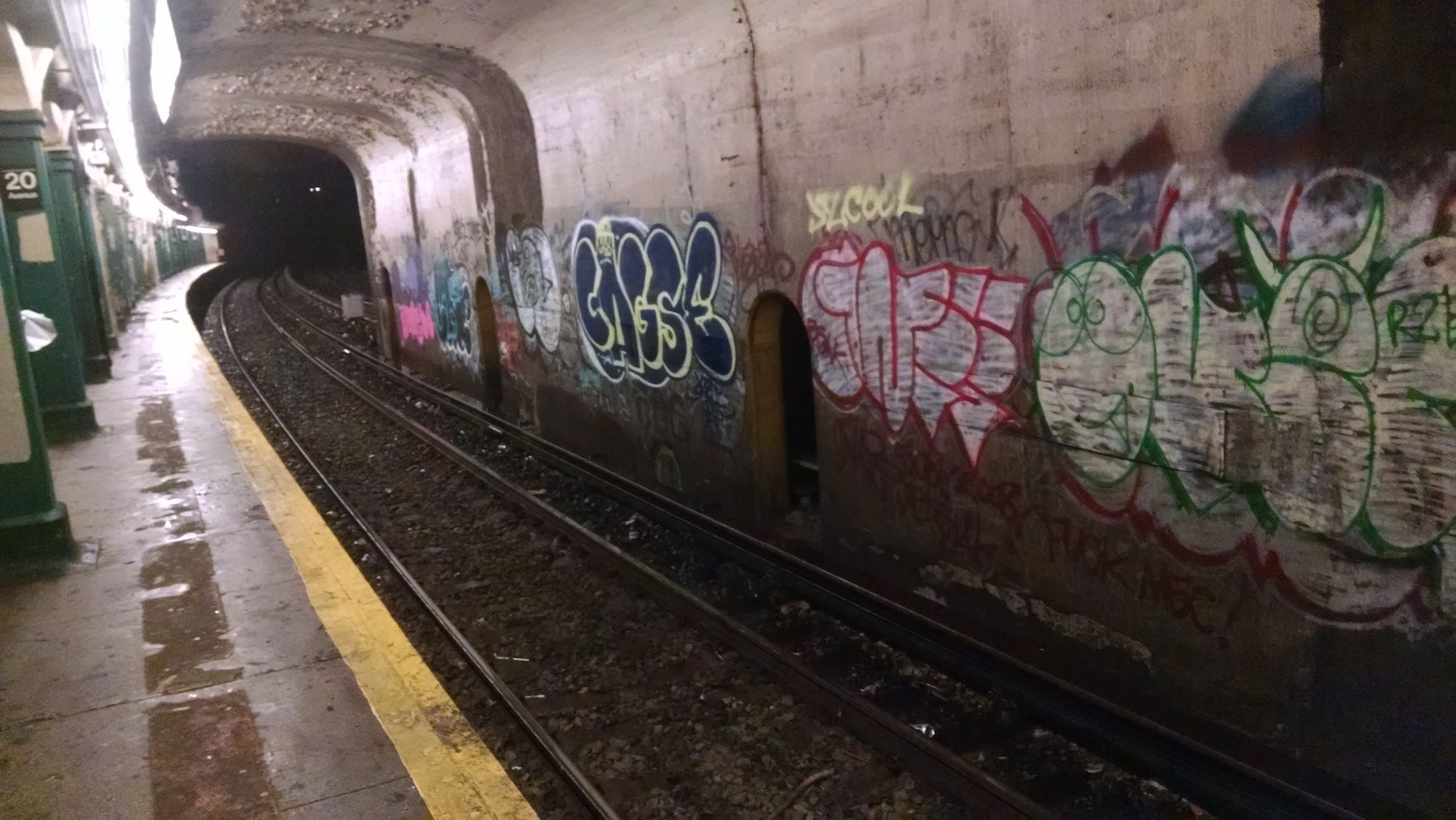A Century Of Straphanger Stories From The Sea Beach Line

Much to the discontent of Bensonhurst and Gravesend commuters, the MTA has executed its plan to partially suspend northbound N train service for the next 14 months, requiring instead that you first schlep to Coney Island in order to reach Manhattan.
The N line, originally the Sea Beach line, reached its 100th birthday this past year with its stations showing its age all too clearly. While this might be a great inconvenience, no doubt we’ll all enjoy cleaner, less drippy N train platforms.
To get a glimpse of the subway line in better times, Gravesend documentarian Joseph Ditta has posted a photo dating back to when the subway line was shiny and new on his site The Gravesend Gazette. Read on for more anecdotes from the N train’s century-long history.
1. The Muddy Feet That Started It All

Back in the day, reaching Coney Island was a mess.
To get there, one had to cross Coney Island Creek during low tide when the mud flats would’ve been exposed, providing reasonably solid ground to trek across. This crossing to Coney Island was roughly where the Coney Island Train Yard is today.
In the 1820s, some investors noted the possibility of creating Coney Island into a more accessible region — a legitimate guess considering the willingness of crossing the sludgy creek to access the beach — so they created Shell Road. Later on, these same investors opened what was one of the first resort hotels in Coney Island.
These developments undoubtedly led to the inspiration of the Sea Beach line, serving as a litmus test for the further development and need for transportation to and from Coney Island.
2. Disaster On The Sea Beach Line

On Labor Day of 1895, tragedy struck the Sea Beach line. The Sea Beach Railroad — the early ancestor to the N train — suffered a major accident after a disengaged engine collided with a car filled with passengers headed into Coney Island, leaving several dead and many critically injured. The engine had broken off and slid down the rails where it ultimately struck the passenger car.
The accident called into question safety measures to be taken in the future and ultimately, the blame was placed on faulty brakes in the engine and the lack of switch on the tracks to stop runaway cars.
3. Pint-Sized Stowaways

In the 1940s, a 5-year-old was so smitten with Coney Island, he learned how to board the Sea Beach line himself in order to spend his nickels on ice cream at Coney Island.
Little Allen made his way to the Coney Island-bound line from his Fort Greene area home and took the 40-minute trip alone — much to the alarm of his parents – not once, but several times.
When Allen was found, he reluctantly told the detectives that he could feed himself throughout the day and well into the night by eating ice cream cones and even managed to get onto the “not dangerous” rides for free by walking behind the adults.
4. Bay Parkway Express Needed

In 1928, the Bensonhurst community gathered to rally for the BRT (Brooklyn Rapid Transit, a predecessor to the MTA) to install an express stop at Bay Parkway Station to accommodate the rapidly growing community. They argued the express service would have allowed the Sea Beach line to run faster and relieve some of the congestion leading into Manhattan and downtown Brooklyn. At the time, service ran express from 59th to Bay Parkway and then Kings Highway and ultimately to Coney Island, only in the summer.
The proposal would have the Sea Beach line regularly skip stops along a special express line from Bay Parkway all the way until 59th street, shaving down about twenty minutes on the commute. Alas, the idea never materialized, though now we will be getting mandatory express service for all during the N’s ongoing construction project.
5. Charges of Rowdyism

Here’s an antiquated charge that the MTA ought to bring back! In the 1920s and earlier, there existed a charge known as “Rowdyism.”
Rowdyism, today defined as disorderly conduct, was a serious enough charge to be arrested for while riding the Sea Beach line. Four youths were arrested on the charge of rowdyism after throwing newspapers around, plugging up the megaphones with paper, moving the car cushions around and creating general disturbance.
As an alternative to spending two days in jail, the youths were charged with a $10 fine ($140 dollars equivalent today) and stern words from Magistrate Golden: “..Rowdyism in trains is one of the meanest phases of disorderly conduct. When one is sitting in a train he is entitled to perfect peace and should not be molested by rowdies such as you.”
6. Bat the Dog
In 1895, not quite the Sea Beach line, but rather another early ancestor of it, had its own guide dog named Bat. The West End brand of the Atlantic Avenue trolley was greeted every morning at 8:10am by Bat at the Bensonhurst station, which was roughly where 86th Street and Bay Parkway meet today.
Bat was a friendly blonde collie who would run along side the trolley for its three mile journey all the way to 36th Street and 5th Avenue at what was then the Union Depot. Once Bat and his humans reached their destination, he’d be treated with cake and other treats that children purposely brought with them to feed Bat.
After refueling, Bat would complete the journey again with the south bound trolley and would return home to Bensonhurst. Residents reported never knowing whom he belonged to nor where he went.




